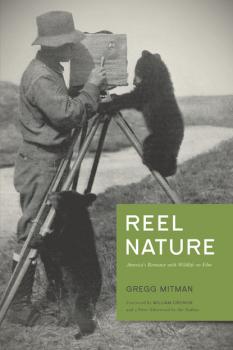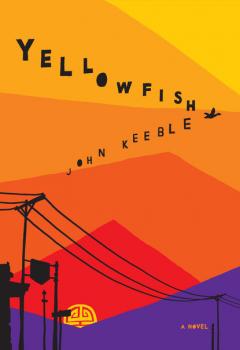Историческая литература
Различные книги в жанре Историческая литератураToxic Archipelago
Every person on the planet is entangled in a web of ecological relationships that link farms and factories with human consumers. Our lives depend on these relationships – and are imperiled by them as well. Nowhere is this truer than on the Japanese archipelago.During the nineteenth century, Japan saw the rise of Homo sapiens industrialis, a new breed of human transformed by an engineered, industrialized, and poisonous environment. Toxins moved freely from mines, factory sites, and rice paddies into human bodies. Toxic Archipelago explores how toxic pollution works its way into porous human bodies and brings unimaginable pain to some of them. Brett Walker examines startling case studies of industrial toxins that know no boundaries: deaths from insecticide contaminations; poisonings from copper, zinc, and lead mining; congenital deformities from methylmercury factory effluents; and lung diseases from sulfur dioxide and asbestos.This powerful, probing book demonstrates how the Japanese archipelago has become industrialized over the last two hundred years – and how people and the environment have suffered as a consequence.
The Sichuan Frontier and Tibet
During China's last dynasty, the Qing (1644-1911), the empire's remote, bleak, and politically insignificant Southwest rose to become a strategically vital area. This study of the imperial government's handling of the southwestern frontier illuminates issues of considerable importance in Chinese history and foreign relations: Sichuan's rise as a key strategic area in relation to the complicated struggle between the Zunghar Mongols and China over Tibet, Sichuan's neighbor to the west, and consequent developments in governance and taxation of the area.Through analysis of government documents, gazetteers, and private accounts, Yingcong Dai explores the intersections of political and social history, arguing that imperial strategy toward the southwestern frontier was pivotal in changing Sichuan's socioeconomic landscape. Government policies resulted in light taxation, immigration into Sichuan, and a military market for local products, thus altering Sichuan but ironically contributing toward the eventual demise of the Qing.Dai's detailed, objective analysis of China's historical relationship with Tibet will be useful for readers seeking to understand debates concerning Tibet's sovereignty, Tibetan theocratic government, and the political dimension of the system of incarnate Tibetan lamas (of which the Dalai Lama is one).
A Moveable Empire
A Moveable Empire examines the history of the Ottoman Empire through a new lens, focusing on the migrant groups that lived within its bounds and their changing relationship to the state's central authorities. Unlike earlier studies that take an evolutionary view of tribe-state relations – casting the development of a state as a story in which nomadic tribes give way to settled populations – this book argues that mobile groups played an important role in shaping Ottoman institutions and, ultimately, the early republican structures of modern Turkey.Over much of the empire's long history, local interests influenced the development of the Ottoman state as authorities sought to enlist and accommodate the various nomadic groups in the region. In the early years of the empire, maintaining a nomadic presence, especially in frontier regions, was an important source of strength. Cooperation between the imperial center and tribal leaders provided the center with an effective way of reaching distant parts of the empire, while allowing tribal leaders to perpetuate their own authority and guarantee the tribes' survival as bearers of distinct cultures and identities. This relationship changed in the eighteenth and nineteenth centuries, as indigenous communities discovered new possibilities for expanding their own economic and political power by pursuing local, regional, and even global opportunities, independent of the Ottoman center.The loose, flexible relationship between the Ottoman center and migrant communities became a liability under these changing conditions, and the Ottoman state took its first steps toward settling tribes and controlling migrations. Finally, in the early twentieth century, mobility took another form entirely as ethnicity-based notions of nationality led to forced migrations.
Sky Train
Through a lyrical narrative of her journey to Tibet in 2007, activist Canyon Sam contemplates modern history from the perspective of Tibetan women. Traveling on China's new «Sky Train,» she celebrates Tibetan New Year with the Lhasa family whom she'd befriended decades earlier and concludes an oral-history project with women elders.As she uncovers stories of Tibetan women's courage, resourcefulness, and spiritual strength in the face of loss and hardship since the Chinese occupation of Tibet in 1950, and observes the changes wrought by the controversial new rail line in the futuristic «new Lhasa,» Sam comes to embrace her own capacity for letting go, for faith, and for acceptance. Her glimpse of Tibet's past through the lens of the women – a visionary educator, a freedom fighter, a gulag survivor, and a child bride – affords her a unique perspective on the state of Tibetan culture today – in Tibet, in exile, and in the widening Tibetan diaspora.Gracefully connecting the women's poignant histories to larger cultural, political, and spiritual themes, the author comes full circle, finding wisdom and wholeness even as she acknowledges Tibet's irreversible changes.
Dreaming of Sheep in Navajo Country
Dreaming of Sheep in Navajo Country offers a fresh interpretation of the history of Navajo (Din�) pastoralism. The dramatic reduction of livestock on the Navajo Reservation in the 1930s – when hundreds of thousands of sheep, goats, and horses were killed – was an ambitious attempt by the federal government to eliminate overgrazing on an arid landscape and to better the lives of the people who lived there. Instead, the policy was a disaster, resulting in the loss of livelihood for Navajos – especially women, the primary owners and tenders of the animals – without significant improvement of the grazing lands.Livestock on the reservation increased exponentially after the late 1860s as more and more people and animals, hemmed in on all sides by Anglo and Hispanic ranchers, tried to feed themselves on an increasingly barren landscape. At the beginning of the twentieth century, grazing lands were showing signs of distress. As soil conditions worsened, weeds unpalatable for livestock pushed out nutritious native grasses, until by the 1930s federal officials believed conditions had reached a critical point. Well-intentioned New Dealers made serious errors in anticipating the human and environmental consequences of removing or killing tens of thousands of animals.Environmental historian Marsha Weisiger examines the factors that led to the poor condition of the range and explains how the Bureau of Indian Affairs, the Navajos, and climate change contributed to it. Using archival sources and oral accounts, she describes the importance of land and stock animals in Navajo culture. By positioning women at the center of the story, she demonstrates the place they hold as significant actors in Native American and environmental history.Dreaming of Sheep in Navajo Country is a compelling and important story that looks at the people and conditions that contributed to a botched policy whose legacy is still felt by the Navajos and their lands today.
Wilderness in National Parks
Wilderness in National Parks casts light on the complicated relationship between the National Park Service and its policy goals of wilderness preservation and recreation. By examining the overlapping and sometimes contradictory responsibilities of the park service and the national wilderness preservation system, John C. Miles finds the National Park Service still struggling to deal with an idea that lies at the core of its mission and yet complicates that mission, nearly one hundred years into its existence.The National Park Service's ambivalence about wilderness is traced from its beginning to the turn of the twenty-first century. The Service is charged with managing more wilderness acreage than any government agency in the world and, in its early years, frequently favored development over preservation. The public has perceived national parks as permanently protected wilderness resources, but in reality this public confidence rests on shaky ground.Miles shows how changing conceptions of wilderness affected park management over the years, with a focus on the tension between the goals of providing recreational spaces for the American people and leaving lands pristine and undeveloped for future generations.
Reel Nature
Winner of the History of Science Society's Watson Davis and Helen Miles Davis Prize in the History of Science.From the early exploits of Teddy Roosevelt in Africa to blockbuster films such as March of the Penguins, Gregg Mitman's Reel Nature reveals how changing values, scientific developments, and new technologies have come to shape American encounters with wildlife on and off the big screen. Whether crafted to elicit thrills or to educate audiences about the real-life drama of threatened wildlife, nature films then and now have had an enormous impact on how Americans see, think about, consume, and struggle to protect animals across the globe.For more information about the author go to: http://gmitman.com/
Jewish Philanthropy and Enlightenment in Late-Tsarist Russia
The Society for the Promotion of Enlightenment among the Jews of Russia (OPE) was a philanthropic organization, the oldest Jewish organization in Russia. Founded by a few wealthy Jews in St. Petersburg who wanted to improve opportunities for Jewish people in Russia by increasing their access to education and modern values, OPE was secular and nonprofit. The group emphasized the importance of the unity of Jewish culture to help Jews integrate themselves into Russian society by opening, supporting, and subsidizing schools throughout the country.While reaching out to Jews across Russia, OPE encountered opposition on all fronts. It was hobbled by the bureaucracy and sometimes outright hostility of the Russian government, which imposed strict regulations on all aspects of Jewish lives. The OPE was also limited by the many disparate voices within the Jewish community itself. Debates about the best type of schools (secular or religious, co-educational or single-sex, traditional or «modern») were constant. Even the choice of language for the schools was hotly debated.Jewish Philanthropy and Enlightenment in Late-Tsarist Russia offers a model of individuals and institutions struggling with the concern so central to contemporary Jews in America and around the world: how to retain a strong Jewish identity, while fully integrating into modern society.
Yellowfish
Wesley Erks, itinerant machinist and «high class jack-of-all-trades,» takes a hefty fee for smuggling a group of illegal Chinese immigrants («yellowfish») from Vancouver, B.C., to San Francisco in the 1970s. Three are teenaged «Hong Kong boys,» one of whom has been grievously injured. The fourth, a fugitive and the son of a rich Chinese casino owner, means to settle a grudge with a Chinese American secret society, the Triad, but is himself being pursued. The tale of the perilous journey of these five men, along with a woman who becomes implicated in a double-cross, is filled with vivid fictional and historical characters. The whole of it conjures the story of the West itself.Click here for discussion questions for Yellowfish: http://www.washington.edu/uwpress/books/Yellowfish.pdf
Shaping the Shoreline
The Monterey coast, home to an acclaimed aquarium and the setting for John Steinbeck's classic novel Cannery Row, was also the stage for a historical junction of industry and tourism. Shaping the Shoreline looks at the ways in which Monterey has formed, and been formed by, the tension between labor and leisure.Connie Y. Chiang examines Monterey's development from a seaside resort into a working-class fishing town and, finally, into a tourist attraction again. Through the subjects of work, recreation, and environment – the intersections of which are applicable to communities across the United States and abroad – she documents the struggles and contests over this magnificent coastal region. By tracing Monterey's shift from what was once the literal Cannery Row to an iconic hub that now houses an aquarium in which nature is replicated to attract tourists, the interactions of people with nature continues to change.Drawing on histories of immigration, unionization, and the impact of national and international events, Chiang explores the reciprocal relationship between social and environmental change. By integrating topics such as race, ethnicity, and class into environmental history, Chiang illustrates the idea that work and play are not mutually exclusive endeavors.









